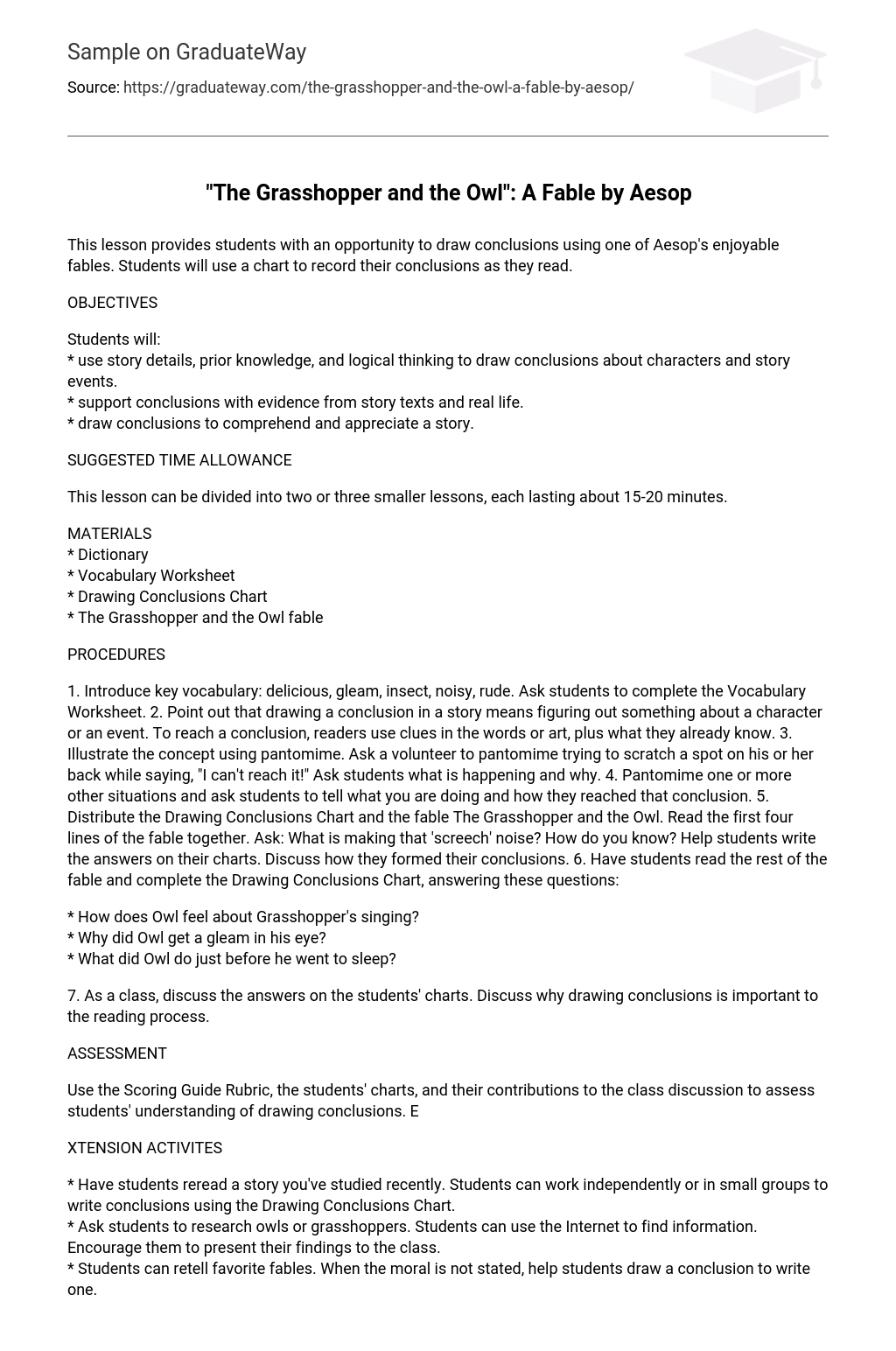In this lesson, students will have the chance to make conclusions by reading one of Aesop’s delightful fables. As they read, students will utilize a chart to document their conclusions.
OBJECTIVES
Students will:
– utilize story details, prior knowledge, and logical thinking to make inferences about characters and story events.
– substantiate inferences with evidence from story texts and real life.
– make inferences to understand and value a story.
SUGGESTED TIME ALLOWANCE
This lesson can be broken down into two or three shorter lessons, each lasting around 15-20 minutes.
MATERIALS
* Dictionary
* Vocabulary Worksheet
* Drawing Conclusions Chart
* The Grasshopper and the Owl fable
PROCEDURES
1. Present important vocabulary words: delicious, gleam, insect, noisy, rude. Instruct students to fill out the Vocabulary Worksheet.
2. Explain that drawing conclusions in a story involves deducing something about a character or event. This is done by analyzing clues in the text or artwork, as well as using prior knowledge.
3. Demonstrate the concept through pantomime. Ask a volunteer to mime attempting to scratch their back while uttering “I can’t reach it!” Prompt students to deduce what is happening and why.
4. Perform additional pantomimes and ask students to determine your actions and how they arrived at that conclusion.
5. Provide the Drawing Conclusions Chart and the fable The Grasshopper and the Owl. Read the first four lines of the fable aloud as a class. Inquire: What is causing the ‘screech’ sound? How do you know? Assist students in recording their responses on their charts. Discuss their reasoning behind forming conclusions.
6. Instruct students to independently read the remainder of the fable and complete the Drawing Conclusions Chart by answering the following questions:
* Owl’s sentiment towards Grasshopper’s singing?
* The reason for Owl’s gleaming eyes?
* The action Owl took prior to falling asleep?
When reviewing the answers on the students’ charts as a class, it is crucial to emphasize the significance of drawing conclusions while reading.
ASSESSMENT
Assess students’ understanding of drawing conclusions by using the Scoring Guide Rubric, the students’ charts, and their contributions to the class discussion. E
XTENSION ACTIVITIES
– Instruct students to revisit a story that has been recently studied. They can work alone or in small groups and use the Drawing Conclusions Chart to write their conclusions.
– Require students to conduct research on owls or grasshoppers. They can use the Internet as a resource and should present their findings to the entire class.
– Encourage students to retell their favorite fables. If the moral is not explicitly stated, assist them in drawing a conclusion and writing one.





